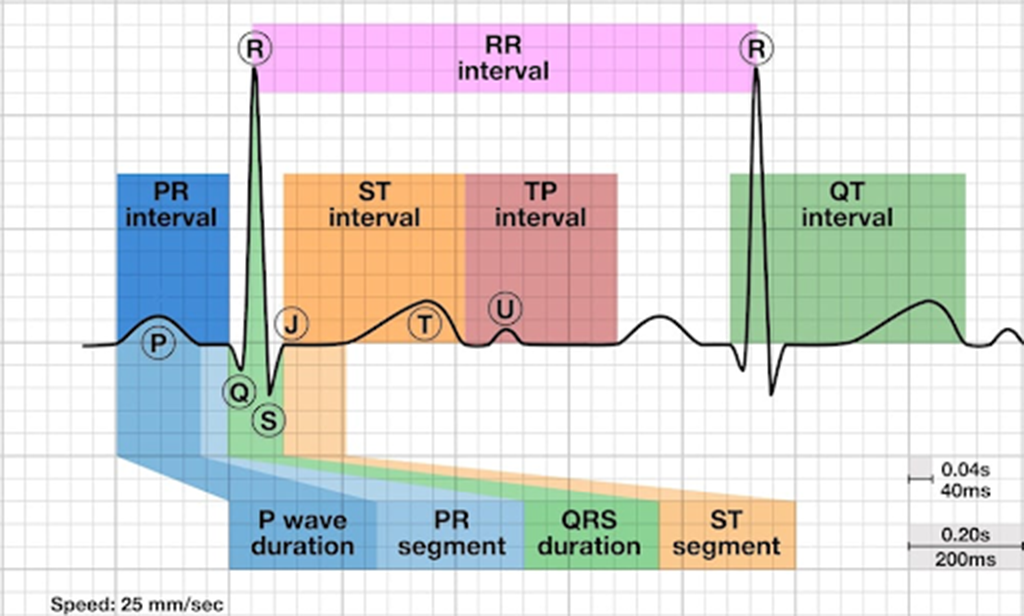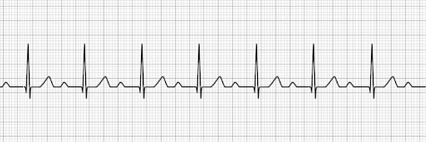Your cart is currently empty!

| PROTOTYPICAL ECG TRACING | |
|---|---|
| P-wave | Electrical activity is traveling through the atria. Synonymous with atrial depolarization. Reflects atrial contraction. |
| QRS Complex | Electrical activity is traveling through the ventricles. Depolarization of the left and right ventricles. Reflects ventricular contraction. |
| T-wave | Synonymous with ventricular repolarization. Reflects the start of ventricular relaxation. |
| PR Interval | Onset of the P-wave to the start of the QRS complex. Reflects conduction through the atrioventricular (AV) node. |
| PR Segment | End of the P-wave to the start of the QRS complex. Reflects time delay between atrial and ventricular activation. |
| ST Interval | Onset of the S-wave to the start of the T-wave. Reflects initial, slow phase of ventricular repolarization. |
| ST Segment | End of the S-wave (J point) to the start of the T-wave. Reflects ventricular repolarization. |
| QT Interval | Onset of the QRS complex to the end of the T-wave. Reflects the period between ventricular depolarization and ventricular repolarization. |
| TP Interval | End of the T-wave to the end of the P-wave. Reflects a period of electrical inactivity. |
| RR Interval | Reflects time elapsed between two successive R-waves of the QRS. |











